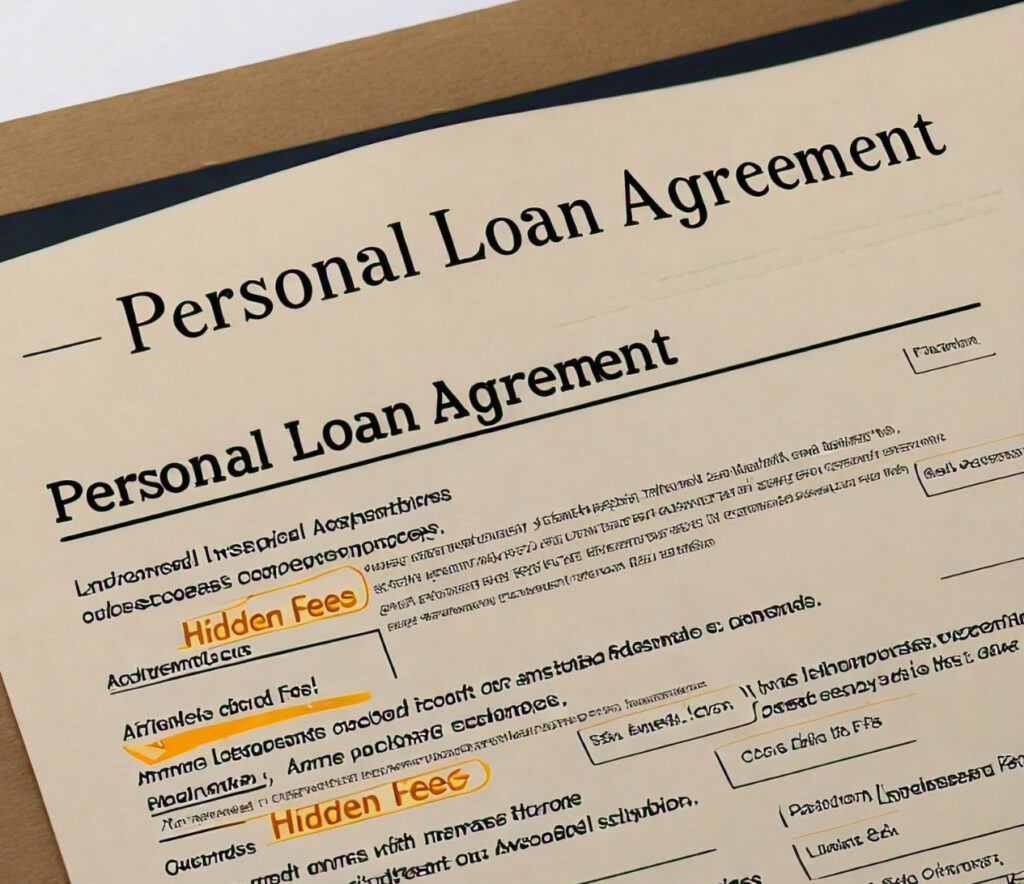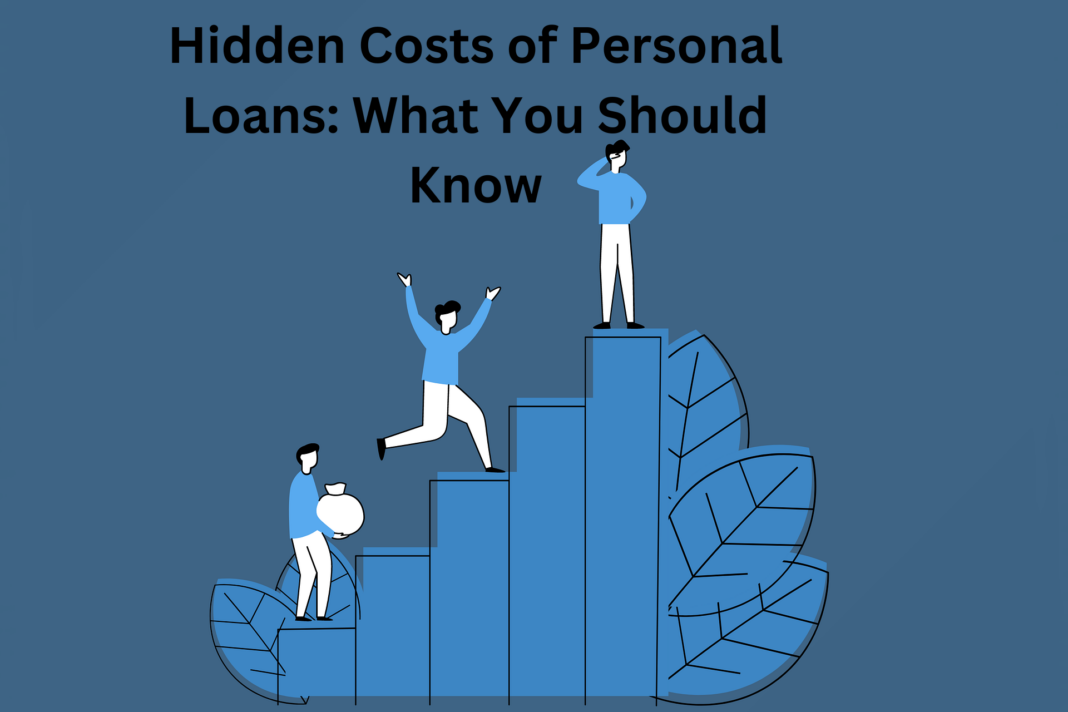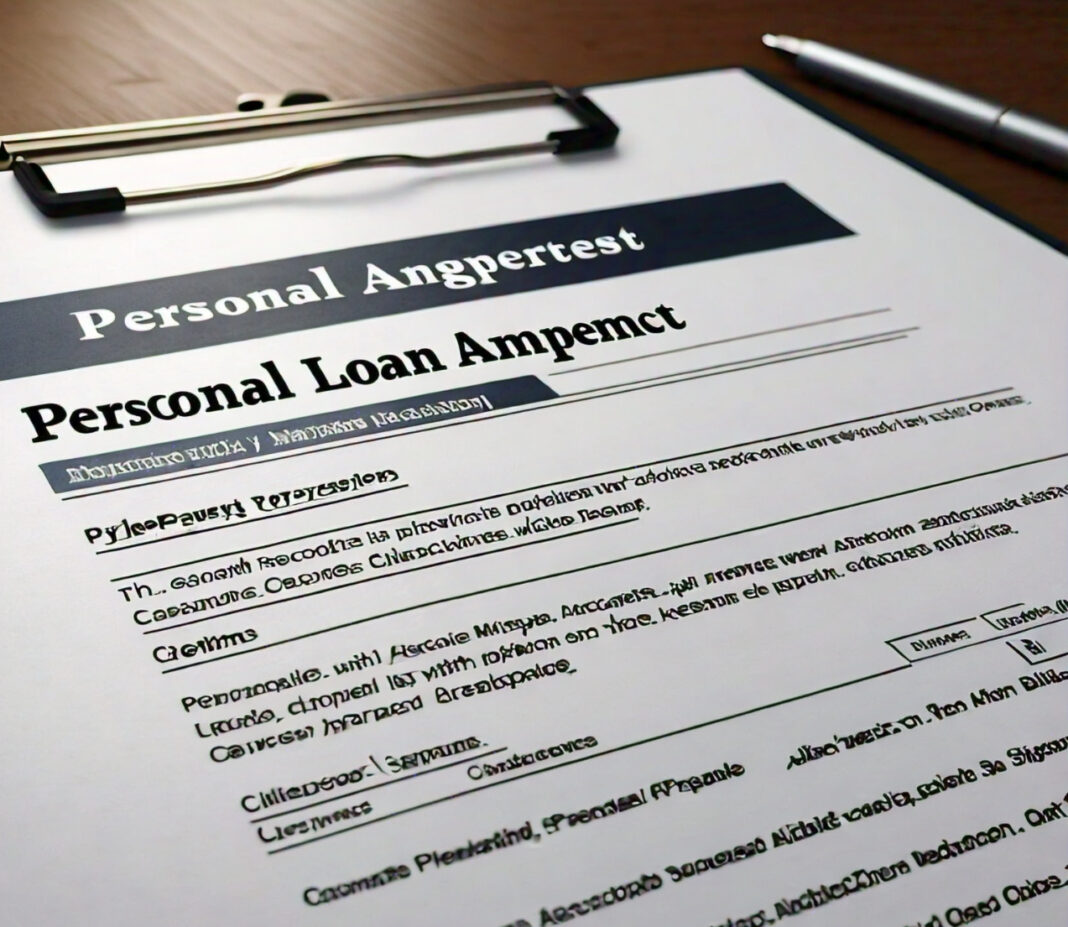Personal loans can be a godsend if you need extra cash to pay off debt, finance some home improvement, or take care of unexpected expenses. Still, beneath seemingly attractive interest rates and promises of quick funding lie a host of hidden fees that might come along the way and substantially raise the cost of borrowing. The following article will discuss some of these often-overlooked charges for making informed decisions and avoiding harmful surprises while taking out a personal loan.

The Appeal of a Personal Loan
Personal loans have gained significant momentum recently due to their great flexibility and generally relatively lower interest rates than credit cards. You get a fixed amount of money you can use for nearly any purpose, including fixed monthly payments over a predefined period. In that sense, simplicity and predictability make personal loans appeal to many kinds of borrowers.
Yet, a personal loan is never that simple. While lenders will surely make sure to let you know about the interest you pay, they are far less eager to broadcast any additional fees that come along with such financial products. These repressed charges mainly make understanding any personal loan type in detail imperative.
Common Hidden Fees in Personal Loans
1. Origination Fees
One of the most common hidden fees in personal loans is the origination fee. This charge covers the cost of processing your loan application and funding the loan.
What you need to know:
• Origination fees can be between 1% and 8% of the borrowed amount.
• They generally come from the loan proceeds, meaning less money than you borrowed.
- Some lenders advertise “no origination fee” loans but make up for lost money in other ways, often with higher interest rates.
Example: If you borrow $10,000 with a 5% origination fee, you get only $9,500 but still pay interest on $10,000.
2. Application Fees
Some lenders charge a fee to apply for the loan, whether you are approved or ultimately accept the loan offer.
What you need to know:
- Application fees are less standard than origination fees but still seem to catch borrowers off guard from time to time
- These often are non-refundable, even if you get denied for the loan
- Cost can vary significantly: from $25 to $50 or higher
Tip: Be wary of any lender that charges an application fee, as many good lenders do not charge this fee.
3. Prepayment Penalties
You would think paying early would be welcomed, but some make money by charging prepayment penalties to claw back lost interest.
What you need to know:
Prepayment penalties may either be some percentage of your outstanding balance or a fixed amount
They are most familiar with mortgages, but they can also be found in personal loans
These can negate any savings you get from paying off the loan early
Example: If you have a $20,000 loan with a 3% prepayment penalty and pay it off after one year, you could owe an additional $600.
4. Late Payment Fees
Though not hidden, late payment fees can easily surprise borrowers if they are unaware of the time needed to make payments.
Key things to know:
- Late fees are usually either a percentage of your payment amount or a flat fee.
- Can range from $15 to $30 or more per late payment
- Some lenders may offer a grace period before they begin charging late fees
Pro Tip: Set up auto-pay to avoid late fees, not to mention potential hits to your credit score.
5. Returned Payment Fees
If your payment can’t be processed because your account lacks sufficient funds, you get charged for the returned payment.
What you need to know:
- They reflect the dollar amount of late payment fees
- You may face two such charges: one from your lender and the other from your bank
- Repeated returned payments may result in higher interest rates or even loan default
6. Check Processing Fees
In the electronic era, it is somewhat unfathomable to be charged by a lender more for choosing a check payment over an electronic one.
What you need to know:
Check processing fees are typically small ($5-10 per payment), but they can add up over time
They are most frequent when lending online, in which case the lender prefers electronic payments
Most of the time it is possible to avoid this additional charge through the establishment of automated electronic payments
7. Annual Fees
While more common for credit cards, some personal loans carry annual fees—particularly those that include unique features or are aimed at borrowers with lower credit scores.
What you should know:
- Annual fees on personal loans do not occur often but, when applicable, can be seriously significant: $25 upwards to over $50 more
- They are due more often on the anniversary date
- These fees can make a loan more expensive than other options, with slightly higher interest rates and no annual fee.
How Hidden Fees Can Affect Your Loan
Hidden fees can add much to your loan beyond what you might anticipate based on the interest rate alone. Here’s how these fees might impact your borrowing experience:
Increased Overall Cost of Borrowing
Adding several fees will greatly increase the total amount you’ll pay over the life of the loan.
Sample calculation:
- Loan amount: $15,000
- Interest rate: 10% APR
- Term: 3 years
- Monthly payment: $484.05, with no fees
- Total interest paid: $2,425.80
Now, let’s add some standard fees:
- 3% origination fee: $450
- Annual fee: $25 per year
- Late payment fee: $25, assuming one late payment per year
With these fees, you are adding to your total cost:
- Additional costs over 3 years: $525 origination + $75 annual fees + $75 late fees = $675
- New total cost: $18,100.80 original total + fees
This represents an estimated increase of 3.9% in the total cost of the loan.
Fewer Loan Proceeds
Pre-deducted fees, such as origination fees, decrease the amount of money you receive in the loan, thereby probably resulting in too little funding.
Higher Effective Interest Rate
When you add up all the fees, your loan’s true interest rate, or APR, may be significantly higher than the nominal interest rate charged.
How to Avoid or Minimize Hidden Fees
1. Read the Fine Print
Always carefully review the loan agreement before signing it. Pay extra attention to sections dealing with fees and charges.
2. Ask Questions
Ask the lender to explain any fees you don’t understand or that weren’t disclosed to you. A reputable lender should be reasonably expected to define their fees up front clearly.
3. Comparison of several lenders
Shopping around-learn what several different lenders are offering. Pay more than lip service to the interest rate, but also figure out the true cost total of your loan, including all of the fees.
4. Negotiate
Some fees, including origination fees, can be negotiated. It never hurts to ask for a reduction or waiver of a fee, especially if you have good credit.
5. Look Into Fee-Free Options
Some lenders offer no-fee personal loans. They might have slightly higher interest rates but could be cheaper overall.
6. Establish Automatic Payments
Don’t pay late fees or check processing fees-set up automatic electronic payments.
- Maintain a Good Credit Score
Those borrowers with good credit also tend to have loans offered with fewer fees and more favorable terms.
Why APR Matters
APR gives you an idea about the overall cost of credit when you apply for a loan. More importantly, it is also used to compare offers among lenders beyond the rate of interest itself.
Key points about APR:
- Is often higher than the nominal interest rate because it includes so many fees
- APR is required legally by lenders
- It provides them with a basis on which to compare other loan offers more easily
Example: If a loan has a 10% interest rate with 2% in fees, the APR would be close to 12%.
Regulatory Protections and Consumer Rights
While hidden fees are an annoyance, there are actually some consumer protections regarding them under the law:
Truth in Lending Act (TILA)
This federal law requires lenders to clearly disclose key information about the terms and costs of a consumer loan, including the APR.
Consumer Financial Protection Bureau (CFPB)
The CFPB has consumer resources and takes complaints about unfair lending practices.
State Regulations
Most states have their own laws regulating personal loans in some manner and capping certain fees. You can contact your state’s consumer protection office to find out about specific protections in your state.
The Future of Personal Loan Fees
As the borrowing market continues to evolve, some of these tendencies might shape the future of hidden charges in personal loans.
More Transparency
Increased competition and mass awareness will definitely compel lenders to be more transparent about their fee structures.
Technology-Driven Cost Reduction
Fintech companies utilize technology to minimize loan processing, which might reduce or eradicate specific fees.
Regulatory Scrutiny
Ongoing regulatory attention to consumer lending practices may spur stricter rules around fee disclosures and limitations.
Conclusion
Hidden fees in personal loans have a way of turning what seems to be, at face value, an affordable borrowing option into an expensive financial albatross. By understanding these potential charges and knowing how to avoid them, you’ll be better equipped to make informed decisions about your borrowing needs.
Remember these key takeaways:
- Read the fine print and ask questions if there are any fees you do not know.
- When shopping around several lenders, pay particular attention to the APR and the total cost of the loan.
- Consider options with no fees and bargain when you can.
- Set up automatic payments to avoid unessential charges.
- Educate yourself on your rights as a borrower and what is required by regulation to protect you.
By paying attention and doing your homework, you can confidently move into the market for personal loans and avoid the pitfalls of hidden fees in securing the financing you need on the best possible terms. For debt consolidation, funding a major purchase, or covering unexpected expenses, a well-chosen personal loan can be a viable financial tool if you know the true cost of borrowing.






